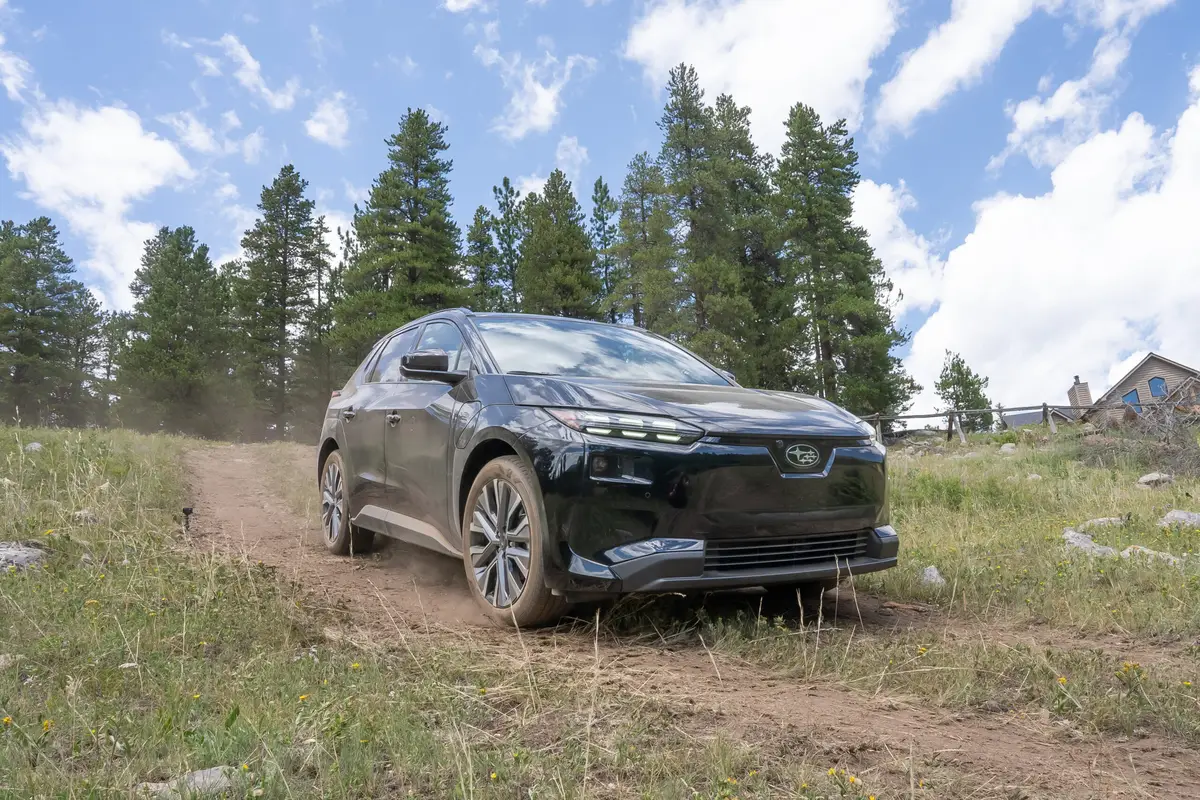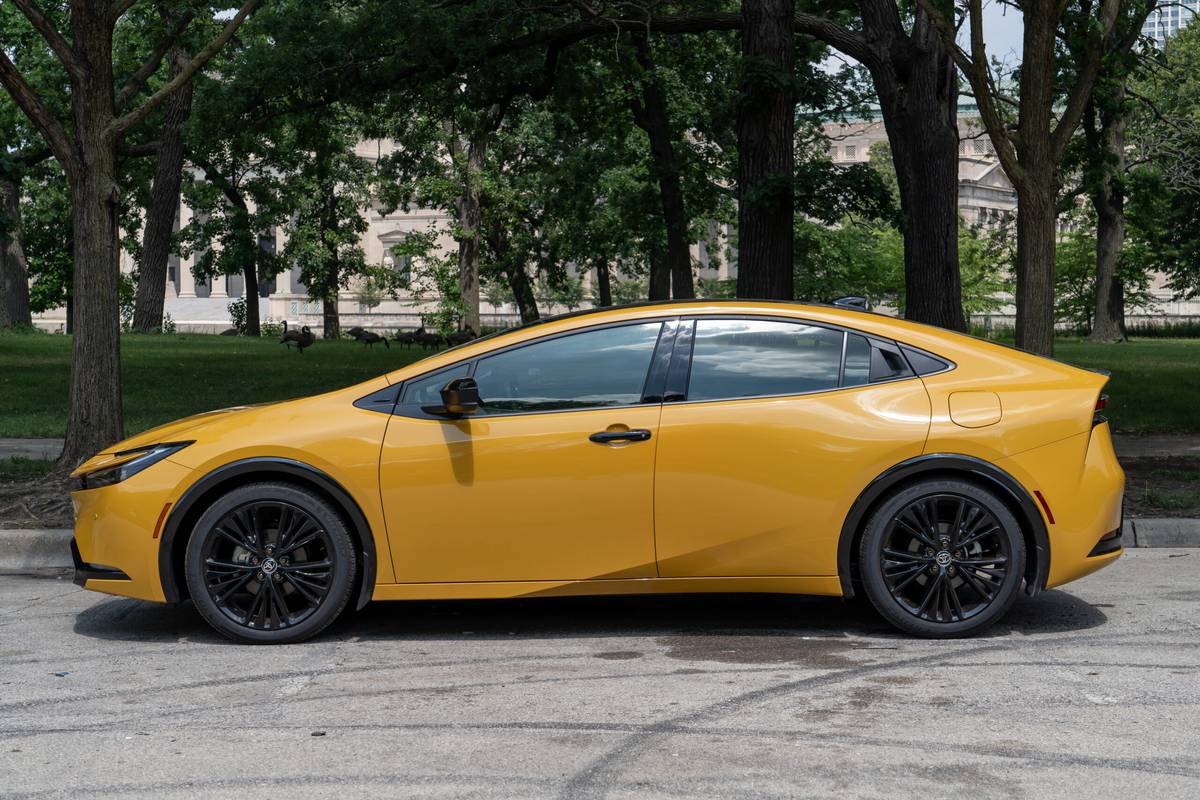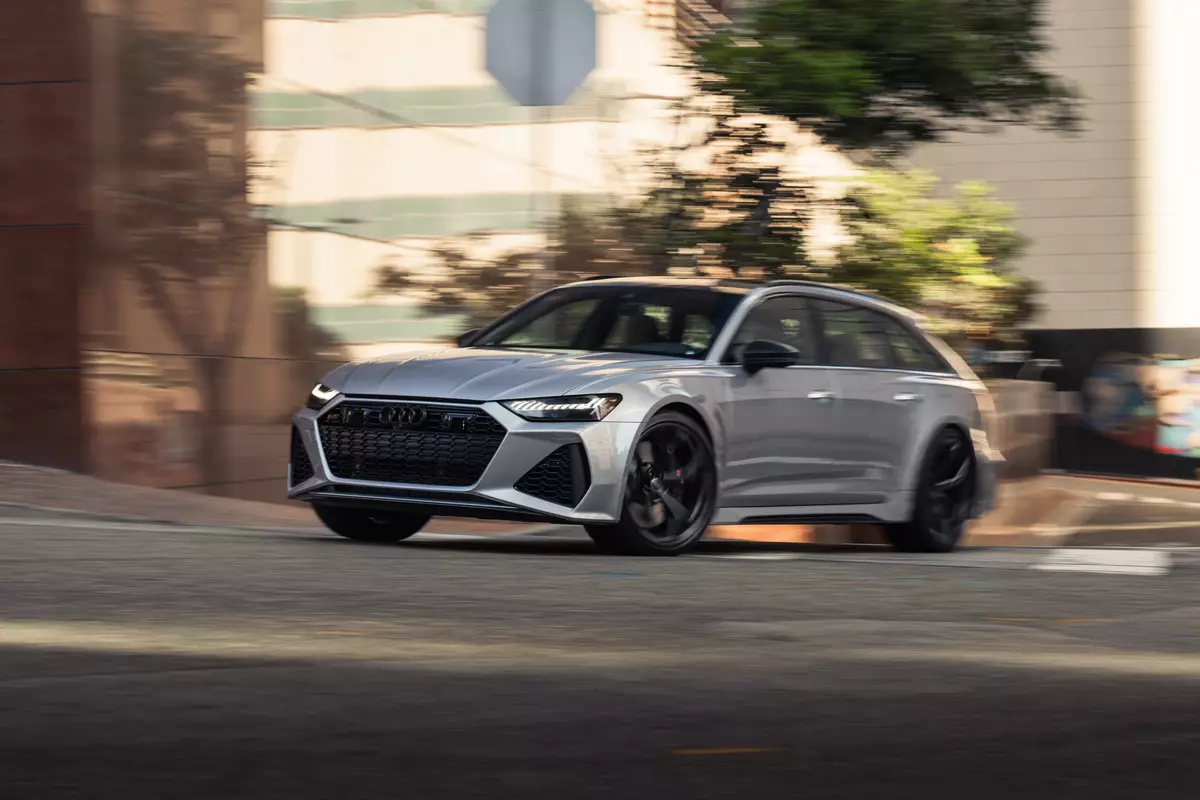2002 Mitsubishi Lancer: What's New
Vehicle Overview
Introduced in April 2001 at the New York International Auto Show, Mitsubishis replacement for the subcompact Mirage has grown to compact dimensions. Rather than being developed as an economy car, the 2002 Lancer has a competition background that evolved from the Lancer Evolution World Rally Car. Naturally, the production model is more civilized than the rally car, according to Pierre Gagnon, executive vice president and chief operating officer of Mitsubishi Motor Sales of America. Even though its suspension has been retuned for everyday driving on American roads, the two cars are closely related down to their unibody chassis level.
Quietness is claimed to be one of the new cars hallmarks, helped by abundant sound insulation and foam-filled body areas. The Lancer is billed as an antidote to driving boredom, as well as an affordably priced compact front-wheel-drive sedan. Three versions are offered: base ES, midlevel LS and an especially spirited O-Z Rally sedan, dubbed street-style Lancer. Mitsubishi expects to sell about 60,000 Lancers annually; they went on sale in August 2001.
Exterior
Styling is said to be European-inspired, including the large greenhouse that suggests excellent visibility. The Lancer sedans cab-forward profile incorporates a high roofline on a comparatively long wheelbase of 102.4 inches. It measures 177.6 inches long overall and stands 54.1 inches high. In both wheelbase and length, the Lancer is 4 inches longer than the Mirage it replaces.
Fender lines have been raised, and sharp edges blend with soft curves on the Lancer body. Turn signals are mounted on the front fender, and the grille has a chrome surround. A-pillars contain rain gutters to help keep water from seeping inside. Aerodynamic wraparound headlights have a multireflector surface, and the low bumper has a large opening for efficient airflow.
A four-wheel-independent suspension uses front struts and a rear multilink configuration. Tires measure 14 inches on the Lancer ES, but the other two models ride on 15-inchers. A rear spoiler is optional on the O-Z Rally edition, which comes with standard racing alloy wheels, bumper extensions and side air dams.
Interior
The Lancers seating accommodates five occupants, with an additional 3.1 inches of rear legroom from that in the Mirage. A low instrument panel and belt line help with visibility, while a high hip point for the front and rear seats should ensure easier entry and exit. The upholstery comes in gray, tan or black. The ES and LS sedans have woodgrain accents, while the O-Z Rally gets a black interior with brushed-metal-finish trim.
Standard equipment includes a height-adjustable drivers seat, CD player, and power windows, door locks and mirrors. The LS adds remote keyless entry, cruise control, variable-speed intermittent wipers and a 60/40-split, folding rear seat. Extras on the O-Z Rally include a sport-touch steering wheel, parking brake handle and gearshift lever, as well as rally racecar EVO VII-style white-faced gauges.
Under the Hood
Power comes from a 2.0-liter, 16-valve four-cylinder engine that develops 120 horsepower and 130 pounds-feet of torque. Engine features include an equal-length intake manifold and a reprofiled camshaft that improves the torque curve for greater performance. A five-speed-manual transmission is standard, and the optional four-speed automatic has adaptive shift control.
Safety
Side-impact airbags and antilock brakes are standard on the ES and O-Z Rally models and optional on the LS sedan. Front seat belts have pretensioners and force limiters. Repositioned front head restraints are angled close to the occupants head.
Driving Impressions
Moving into a different league than the old Mirage, the Lancer isnt the kind of car that stands high in its new class, even when its fitted with sporty details. Despite its motorsport pretensions, the OZ Rally edition with the manual shift lacks the secure confidence of a sport sedan. But it is wholly adequate and satisfying as a small family car.
Acceleration is peppy when pushed hard, and the clutch is operated adeptly. Some engine buzz is noticeable, but the Lancer is as quiet as most four-cylinder cars. The gearshift is OK but not perfect. The clutch is a bit of an obstacle because it yields excessive driveline looseness at times and lacks sufficiently smooth engagement.
The Lancers handling is adequate as it corners easily and responds acceptably to steering inputs, but some drivers may prefer more grip and tenacity in turns. Choppiness is minimal but not absent. The suspension absorbs quite a bit of roughness for an above-average small-car ride. Expect to notice all the commotion underneath. Occupants can get jarred at times, but the experience isnt enough to become annoying.
Legroom, headroom and elbowroom in the front seats are ample. The seats are fairly firm, supportive, comfortable and modestly bolstered. The controls are all within reach. The gauges are easy to see in the daytime, but theyre not quite bright enough at night. The backseat is typical with a hard perch in the center, but its not the worst by any means. Rear headroom is so-so, but legroom and toe space are terrific, beating some cars that are much larger. The trunk isnt huge but it is easy to load and has ample room.
| Reported by Jim Flammang for cars.com From the cars.com 2002 Buying Guide |
Featured stories

2026 Subaru Solterra Review: Necessary Improvements


2025 Toyota Prius Review: Big on Mileage, Small on Space


